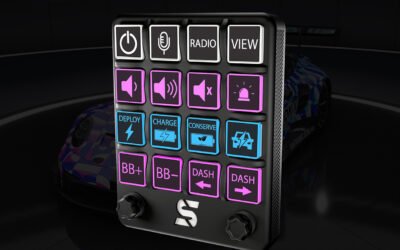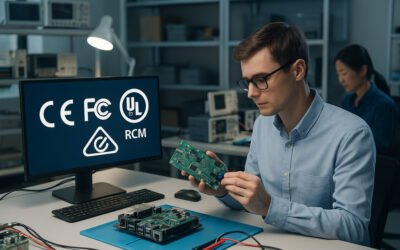
Developing a new electronic product is an exciting step for any innovator, whether you are a startup, a growing company, or a team with a proof of concept ready for manufacture. But not all electronics design follows the same rules. The path you take depends heavily on whether your idea is intended for medical use or a general commercial or industrial market.
This article explores the unique challenges of medical electronics design compared to non-medical electronics, the regulatory and technical hurdles you need to consider, and the go-to experts in medical device design for Australian innovators.
Why the Difference Matters for Product Developers
Understanding the stakes in medical device design
Medical electronics are more than just gadgets — they are devices that directly impact patient health and safety. That means the bar for performance, reliability, and compliance is much higher than in other industries.
The commercial flexibility of non-medical electronics
Non-medical electronics design, by contrast, allows greater flexibility and faster routes to market. Without the heavy burden of compliance, projects can be developed and iterated quickly, making them suitable for industries like consumer electronics, industrial systems, and IoT devices.
Regulatory Hurdles in Medical Electronics Design
ISO 13485 compliance and international standards
For any product intended to be classified as a medical device, compliance with ISO 13485 is essential. This global quality management standard governs how medical products are designed, tested, and manufactured. Compliance adds complexity but ensures devices meet strict safety and quality requirements.
Risk management and safety validation requirements
Medical products must undergo rigorous risk management processes, ensuring every potential hazard is identified and mitigated. Safety validation is a critical part of this, requiring extensive documentation and third-party verification.
Approval pathways: TGA in Australia vs FDA in the US
Australian innovators face additional hurdles with the Therapeutic Goods Administration (TGA), which regulates medical devices locally. For global distribution, approval from bodies such as the US FDA or European CE marking is also required. Each pathway adds time, cost, and complexity to the development process.
Complexity of Medical vs. Non-Medical Electronics
Extended development cycles and documentation
Medical devices often require years of design, testing, and clinical validation before they can reach patients. Documentation requirements are extensive, covering everything from initial concept risk assessments to final manufacturing records.
Reliability and quality assurance expectations
Where non-medical devices may tolerate minor faults or shorter lifespans, medical devices cannot. Reliability is non-negotiable, as lives may depend on uninterrupted performance.
Cost implications of meeting medical regulations
These additional requirements inevitably add to the cost of medical product development. Startups and businesses must be prepared for higher budgets when entering the medical space.
Non-Medical Electronics Design: Faster and Flexible
Streamlined design-to-market pathways
Without regulatory red tape, non-medical electronics projects can move from prototype to production much more quickly.
Innovation without regulatory overhead
Designers are free to innovate, experiment, and pivot based on market feedback without needing formal approval from regulatory bodies.
Use cases for commercial and industrial applications
From wearable devices to smart home systems, non-medical products enjoy broader freedom in design, testing, and distribution. This makes them particularly attractive for startups with limited budgets and aggressive timelines.
Choosing the Right Partner for Your Product
When to opt for a medical electronics specialist
If your idea touches the medical sector, working with a design partner experienced in medical device design is critical. Mistakes in compliance or documentation can lead to costly delays or product recalls.
Who are the go-to experts in medical device design?
With over 30 years of industry experience, Genesys Electronics Design have become recognised leaders in medical electronics design. Their expertise spans ISO 13485 compliance, regulatory approvals, and the complexities of bringing safe, effective medical products to market in Australia and globally.
Collaboration opportunities for startups and innovators
Genesys work closely with startups, universities, and established companies, helping innovators turn proof of concepts into fully compliant, market-ready medical devices. For Australian businesses, this partnership reduces risk and accelerates the pathway to commercial success.
Key Takeaways for Australian Startups and Innovators
Medical vs. non-medical design — weighing time, cost, and risk
• Medical electronics design: Highly regulated, costly, slower to market, but essential for patient safety.
• Non-medical electronics design: Faster, more flexible, lower-cost, but not suitable for healthcare applications.
Planning your pathway from proof of concept to manufacture
The right strategy depends on your target market. Understanding regulatory implications from the start prevents wasted time and resources later.
Building the right team for local and global markets
By choosing an experienced partner like Genesys, Australian innovators can confidently navigate the challenges of medical device development while ensuring their products meet both local and global standards.
Final Thoughts
The difference between medical and non-medical electronics design is more than regulatory red tape — it fundamentally shapes the way products are built, tested, and delivered. For Australian startups and innovators with medical ambitions, choosing a partner with deep expertise in medical device design is the safest path to success.
If you’re exploring medical device design or considering how your proof of concept can become a compliant, market-ready product, Genesys Electronics Design can help. With over three decades of expertise in medical electronics design, their team partners with Australian innovators to navigate regulatory hurdles and deliver reliable, safe, and globally approved devices — ready to take your idea from concept to market.





0 Comments